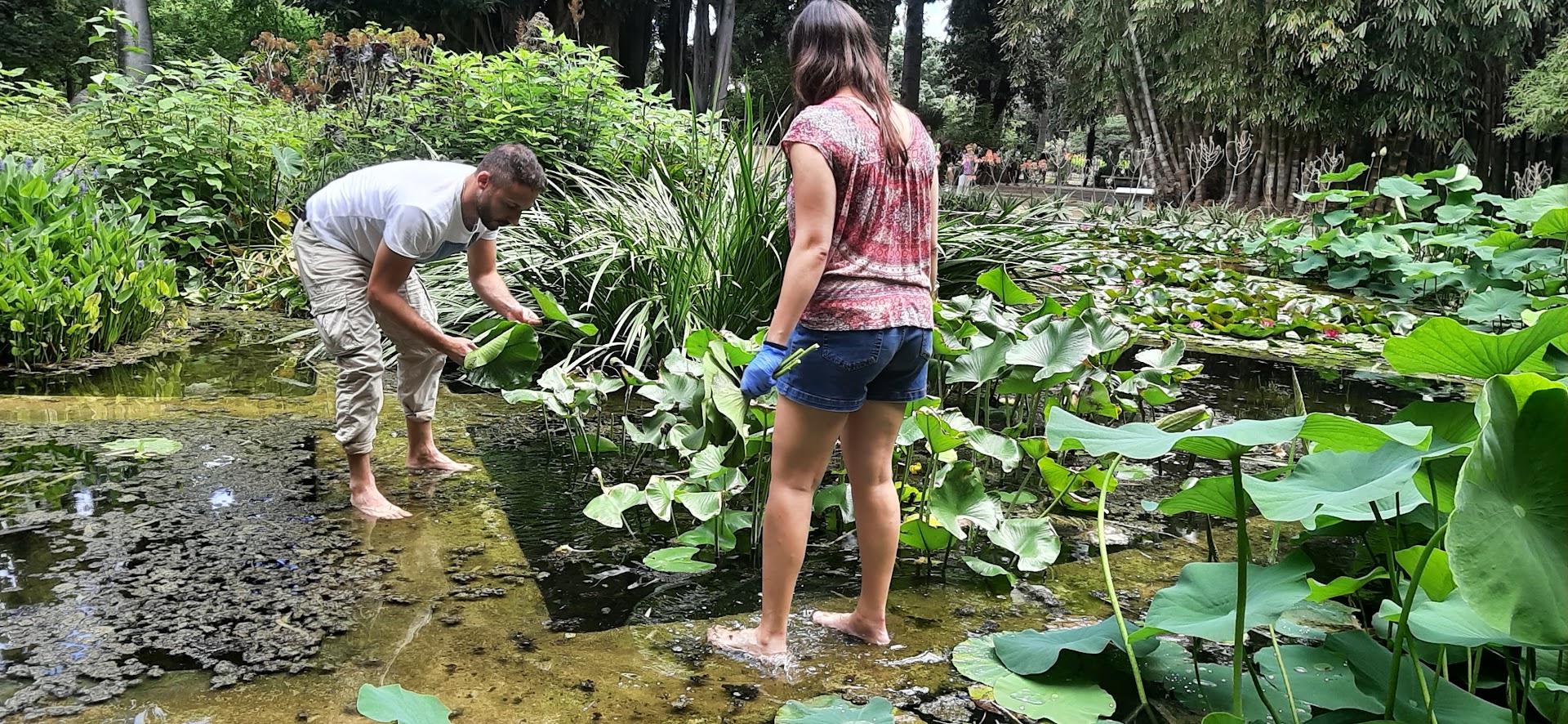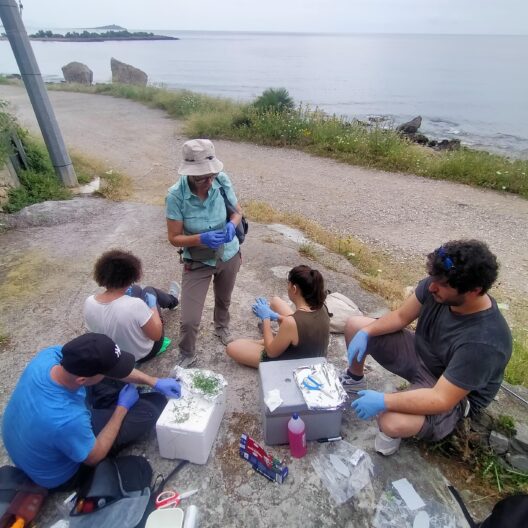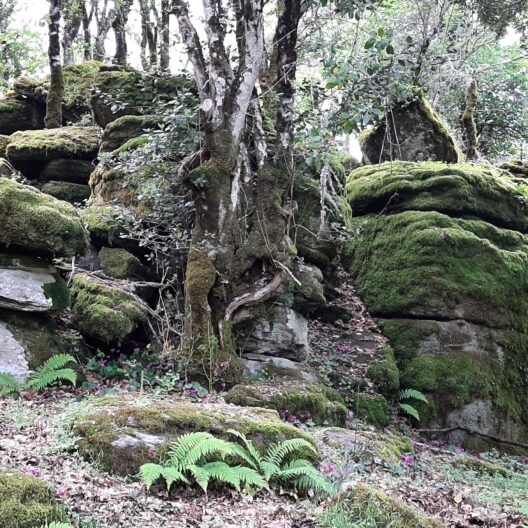
Research and business: ‘biodiversity is a mine’
Reading time
0 min
Italian biodiversity is a still largely unexplored treasure , capable of offering innovative solutions for human health and environmental sustainability. This is the context for the work coordinated by Flavia Guzzo, professor of botany at the University of Verona, who leads a team of more than 100 researchers within the NBFC project. At the center of their efforts is the enhancement of native and allochthonous Italian plants through careful chemical and biological analysis to identify properties useful in the development of nutraceuticals, natural medicines and tools for a more ecologicalagriculture. Through a rigorous, multidisciplinary approach, also supported by artificial intelligence, the group is paving the way for new applications of plant biomolecules, while promoting biodiversity protection and basic scientific research.
Protagonists of the interview
Flavia
Guzzo
- Biologist, Associate Professor in the disciplinary scientific area BIO/01 (General Botany)
- CNR – University of Verona
- flavia.guzzo@univr.it Copia indirizzo email
Professor, how does your work fit into NBFC?
“Within NBFC, I coordinate Spoke 6 Working Table 2, which focuses on biomolecules and biosources. The project carried out by this table aims at the valorization, including economic valorization, of Italian biodiversity species, in particular we deal with plant species. Economic valorization means identifying uses of Italian flora species that can inspire products.”
New horizons: nutrition, health and sustainable agriculture
What are the main areas of application of this enhancement?
“The goal is to find applications in different sectors. For example, developing nutraceuticals, such as dietary supplements, drugs, or products formore sustainableagriculture. Basically, we collect species, many of them little known, analyze them chemically in depth, and then study their potential activities. We have two main focuses: one is the prevention and treatment of noncommunicable inflammatory-based diseases, such as cancer or neurodegeneration; the other is to inspire products for more sustainable agriculture, such as biodegradable natural herbicides or substances that strengthen plants’ natural defenses.”
These sound like very ambitious goals.
“Yes, the goals are extremely ambitious, but thanks to this project we have the resources to be able to achieve them. The table I am coordinating has more than 100 scientists from 12 public and private research centers, working on very different issues and collaborating to achieve the common goals.”
The hidden potential in plants
Many drugs are derived from plants. How widespread is this phenomenon?
“Currently, in the pharmaceutical field, at least 30 percent of drugs on the market are either discovered for the first time or are inspired by plant molecules. Think ofaspirin, whose molecule is found in willow bark; taxol, produced by Taxus baccata and widely used to treat breast cancer; orartemisinin, made fromArtemisia annua and currently the only effective treatment for malaria. This shows how effective natural molecules can be.”

A treasure still largely unexplored
How many of these natural molecules do we actually know?
“This is a crucial point. The species that have been the subject of some chemical study are about 15 to 20 percent of the total species. Considering that there are about 400,000 plant species on the planet, imagine how much more there is to discover. We focus on Italy, which has roughly 11,000 species, of which only a small percentage, perhaps 15 percent, have undergone some exploration. There are so many potential applications
just waiting to be discovered!”
How did you decide to tackle this vast, unexplored biodiversity?
“In our project we took a very precise and innovative approach . To best capture chemical variability, that is, the chemical biodiversity of Italian species with all their useful bioactivities, we started from the consideration that a plant’s ability to produce certain compounds depends on its evolution. We assumed that highly related plants will have similar compounds, while distant plants will have different metabolic pathways. Therefore, we decided to sample representative species from all families of the Italian flora, and we succeeded! This gives us a collection that expresses maximum diversity, increasing the likelihood of finding different substances with different activities. Moreover, we collected a number of species per family proportional to its size, creating a kind of representative ‘parliament’ of plants. This choice was crucial-perhaps the most original in our bioprospecting campaign.”

From chemical analysis to the discovery of bioactivities
What happens after the species is harvested?
“All collected species are analyzed chemically. After this analysis, the most interesting ones are selected and sent to the various research groups for bioactivity analysis. Bioactivity is the effect of a substance on a living organism, a biological tissue or its cells. Analyzing the bioactivity of a plant extract means understanding whether it is, for example, antioxidant, anti-inflammatory, or anticancer. So far we have chemically analyzed 450 species out of the 720 sampled. We have already identified several interesting activities such as antioxidant, which is useful for prevention, anti-inflammatory, cytotoxic (toxic to cancer cells), pain-relieving, anti-aging, neuroprotective, and anti-glycating activities. For agriculture, we have found biostimulant activities, i.e., the ability to improve plant growth; protective activities, i.e., to activate plants’ natural defenses; and antibacterial activities against plant pathogens. There is still much to be discovered.”
The crucial role of enterprises
How can companies benefit from your findings?
“Companies come into play at two moments. First, there are also private centers in the network of 12 research centers, such as the large pharmaceutical company Dompé. But companies will also be able to access data through a dedicated platform, hosted by the Gateway, which will contain information on bioresources, biomolecules and bioactivity. Here we will make available the complete identity card of all 720 species analyzed, both for chemical composition and bioactivities. Companies involved in natural products, nutraceutical supplements, etc., will be able to consult this data to target specific species or to understand the activities of molecules, and then proceed with the development and approval of their products.”
Are you also working on the regulatory aspect?
“Yes, we have experts who are developing a white paper of suggestions for decision makers, because the current botanical legislation needs revision especially on the analytical methods to be used for the analysis of botanical extracts.”
Does artificial intelligence help you in this process?
“Absolutely. We have two poles of study on the use of artificial intelligence: one at the University of Verona and the other at Dompé farmaceutici.AI helps us mainly with in silico experiments, because there are so many proteins on which a substance can act. Testing them all in the lab would be very expensive and time-consuming. AI allows us to identify a few targets that we can then validate in the lab, inexpensively and quickly.”
Time and pathways for new products
When will we be able to find the new products on the market?
“Here it is important to make a distinction. Among the species we studied, some are on the Belfrit list, others are not. This list, developed by Belgium, France and Italy, indicates plants that can be used in the dietary supplement sector. This means that some plant species-those on the list-can already be used on humans; others need longer approval routes.”
Between chemistry and botanical intuition: the search for what is not expected
In archaeology it is often said that you find what you are looking for. Is this also true in your field?
“From the perspective of bioactivities, sometimes it works that way. Instead, as far as chemistry is concerned, it is a different story. Analyses can reveal that a species has a unique chemical composition, and therefore deserves further in-depth investigation. We also have a group dedicated to studying more complex molecules. So chemically, we do not find what we are looking for; rather, with modern nontargeted analysis techniques, we see all or most of the small substances (the metabolites). Many indications also come to us from botany. For example, we have found thatEmpetrum hermaphroditum, a small ericaceae from the Asiago Plateau, creates an environment of ‘vacuum pushed’ under itself, killing other plants. This makes it a perfect candidate for the development of natural pesticides. Having so many botanists who are experts in the area and its species has been crucial to our work.”
A call to protect and invest in biodiversity
Is it possible to send a message to business realities?
“Certainly! Biodiversity is a mine from which we are extracting genuine gems. Some of the species studied are very promising and will lead to important results. But we must remember that we have explored only a small portion of the available species. We cannot allow biodiversity to be depleted, because we could miss out on extraordinary opportunities. And to the young people I say: be curious! And don’t forget basic research, because that is where the great discoveries that shape the future come from.”
“Biodiversity is a largely unexplored mine. We do not allow it to be impoverish: we may miss extraordinary opportunities!”
Flavia Guzzo
A call to protect and invest in biodiversity
Is it possible to send a message to business realities?
“Certainly! Biodiversity is a mine from which we are extracting genuine gems. Some of the species studied are very promising and will lead to important results. But we must remember that we have explored only a small portion of the available species. We cannot allow biodiversity to be depleted, because we could miss out on extraordinary opportunities. And to the young people I say: be curious! And don’t forget basic research, because that is where the great discoveries that shape the future come from.”

